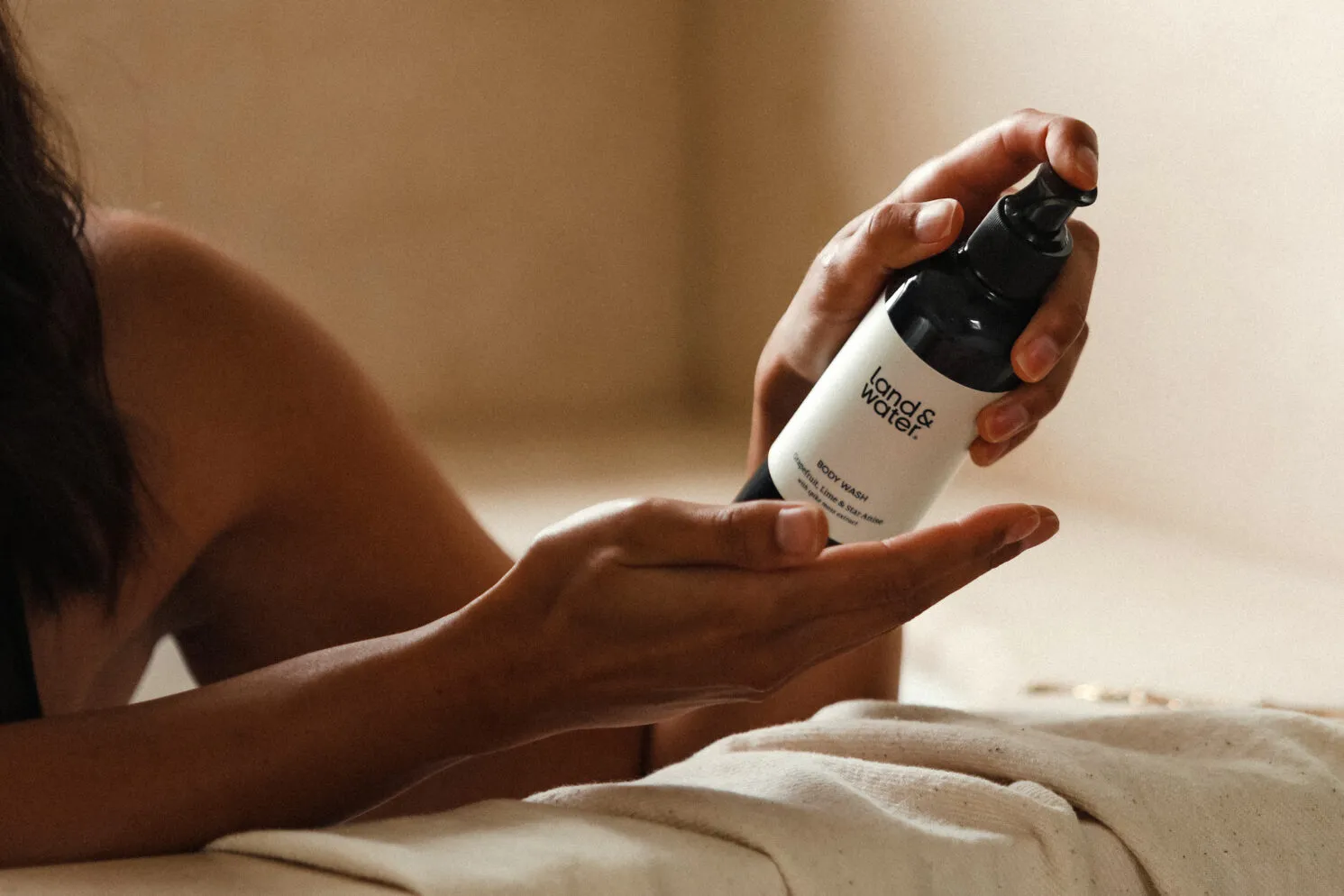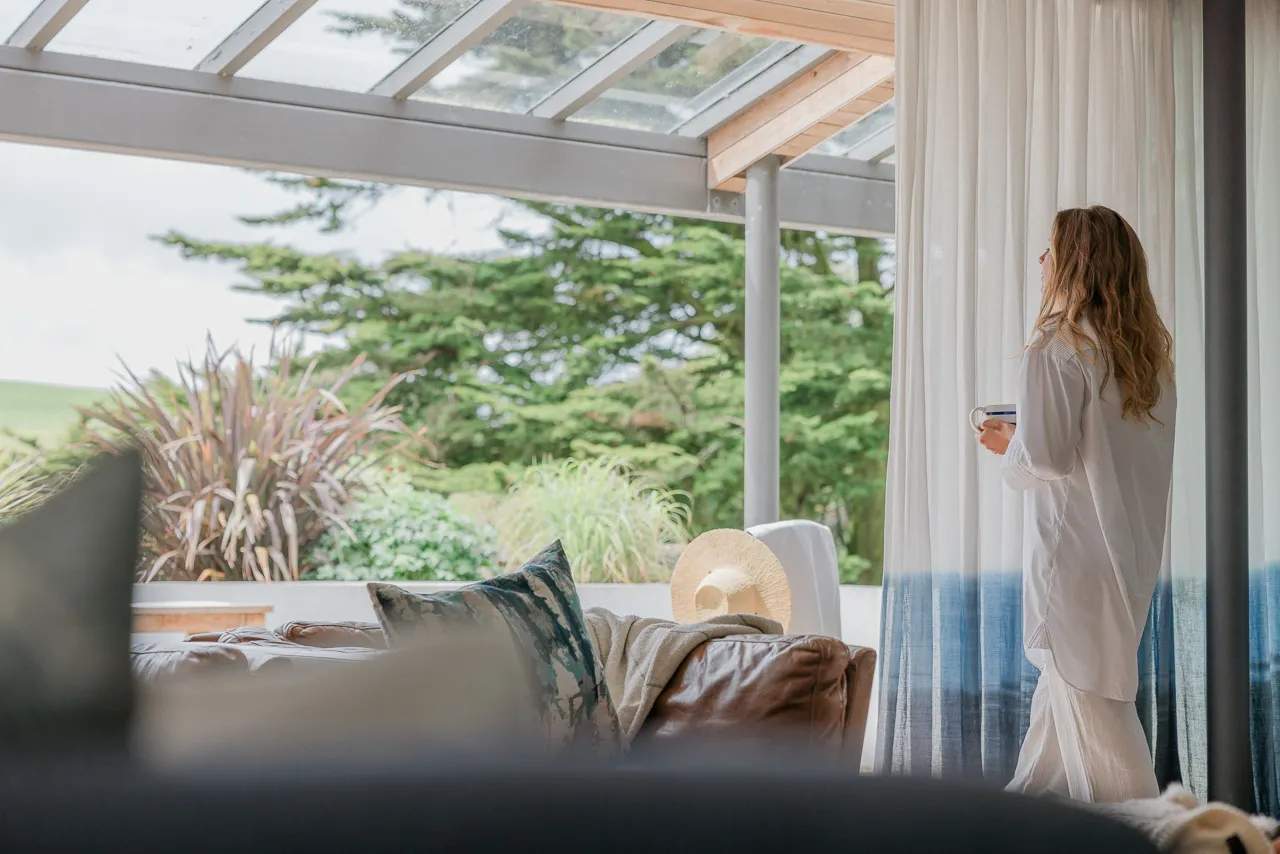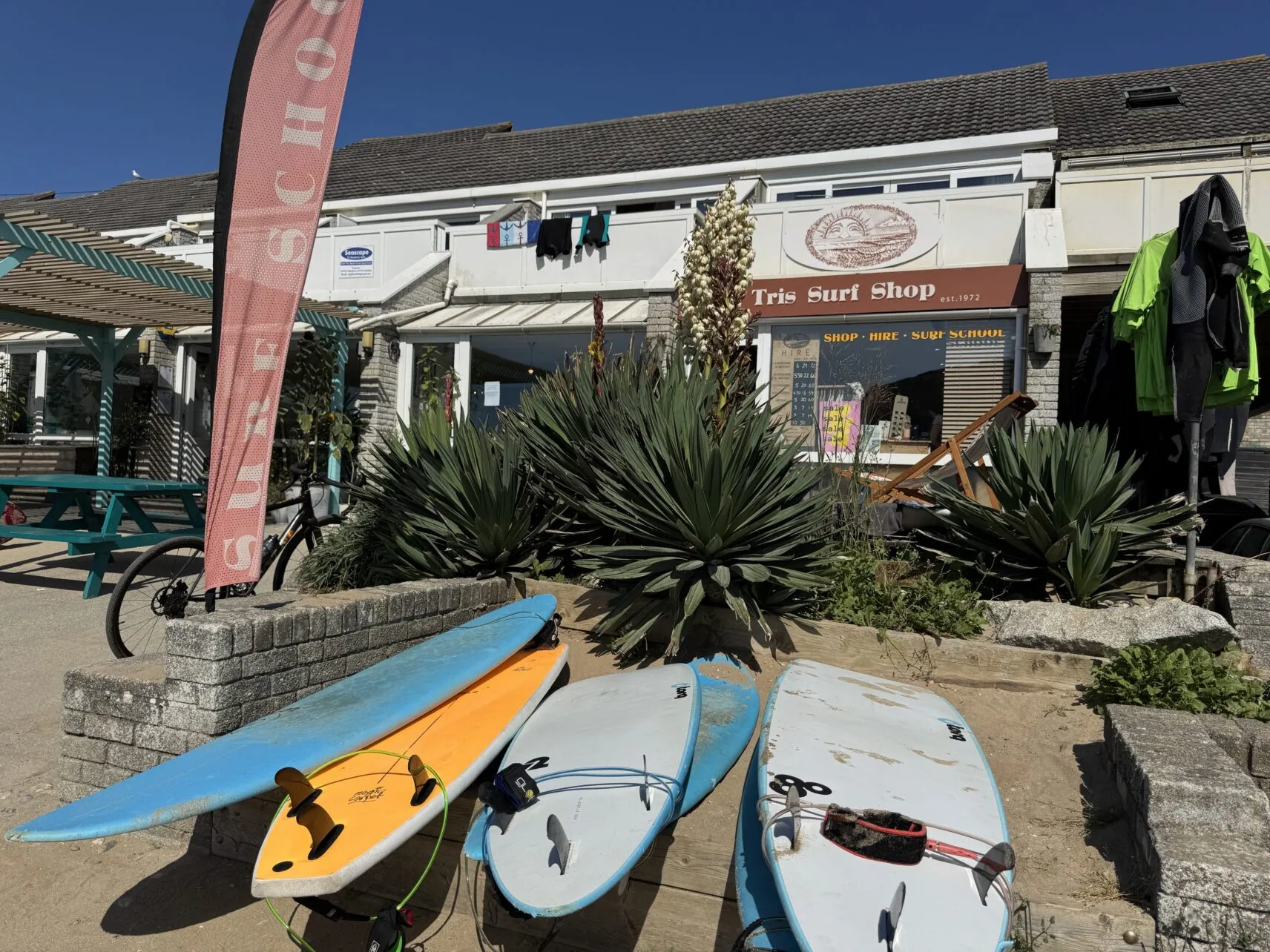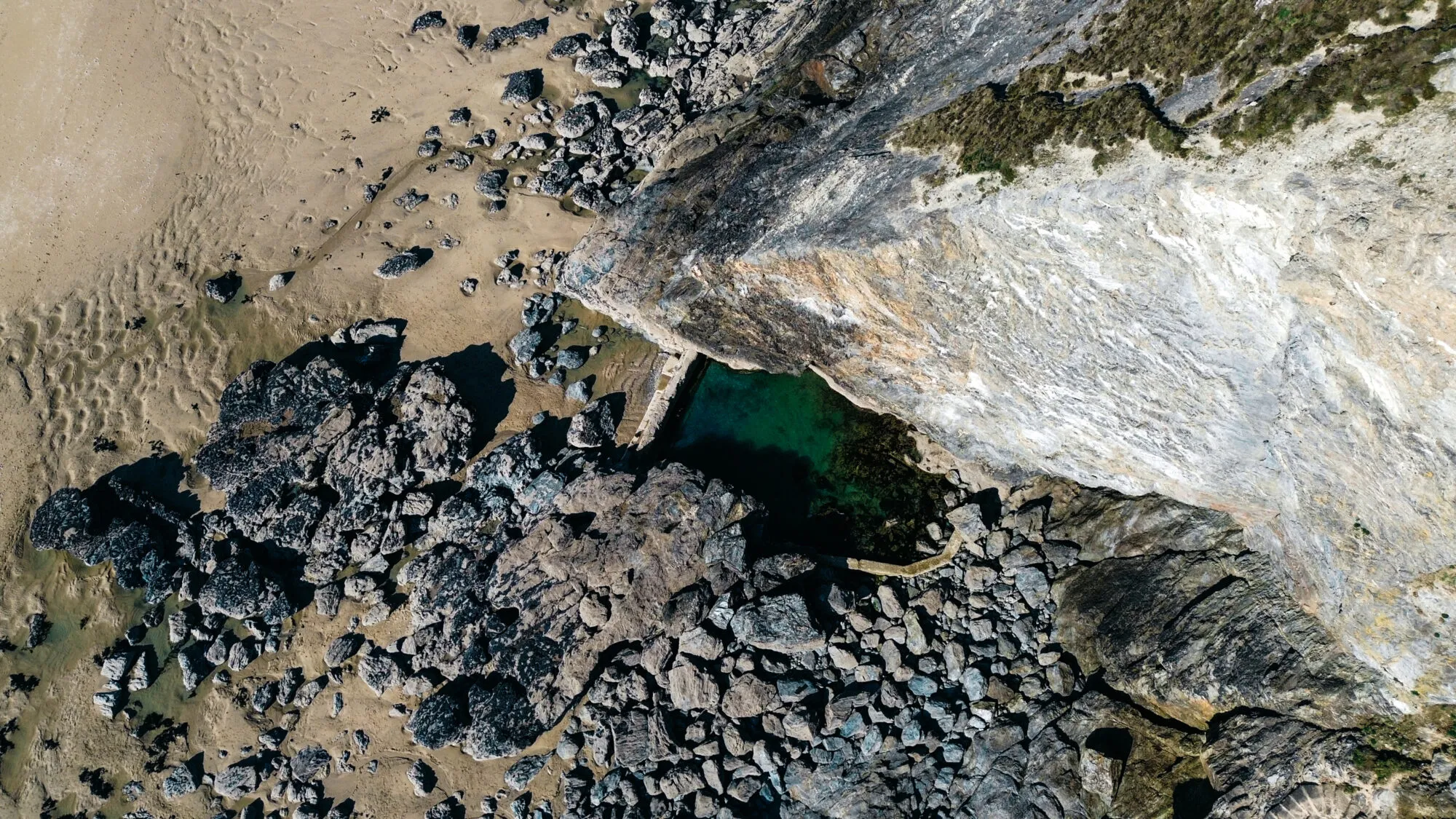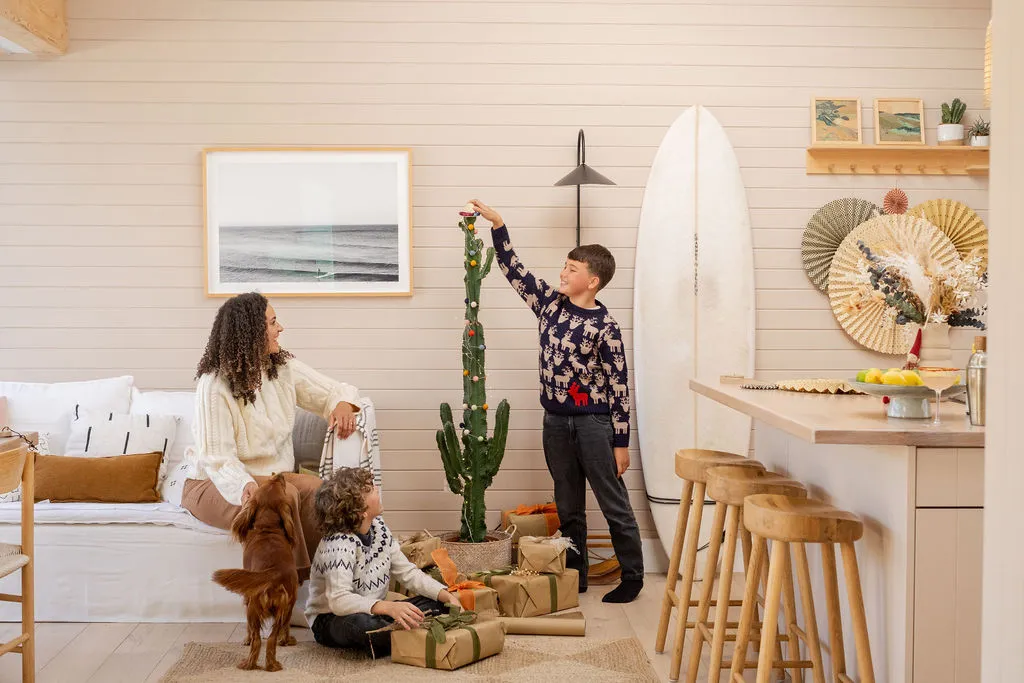
Christmas at the coast begs to be made different, from re-styling the decorations, mixing-up the festive food, sparking Christmas countdown imaginations and reimagining traditions…
GATHER AND CREATE
Go gathering along the coast to bring creativity to your Christmas scene-setting and dining table. On the beach, pieces of colourful glass smoothed by the ceaseless rolling of the waves make for exciting finds: treasure to decorate your retreat, or to leave with the carrot and midnight snack for Santa?
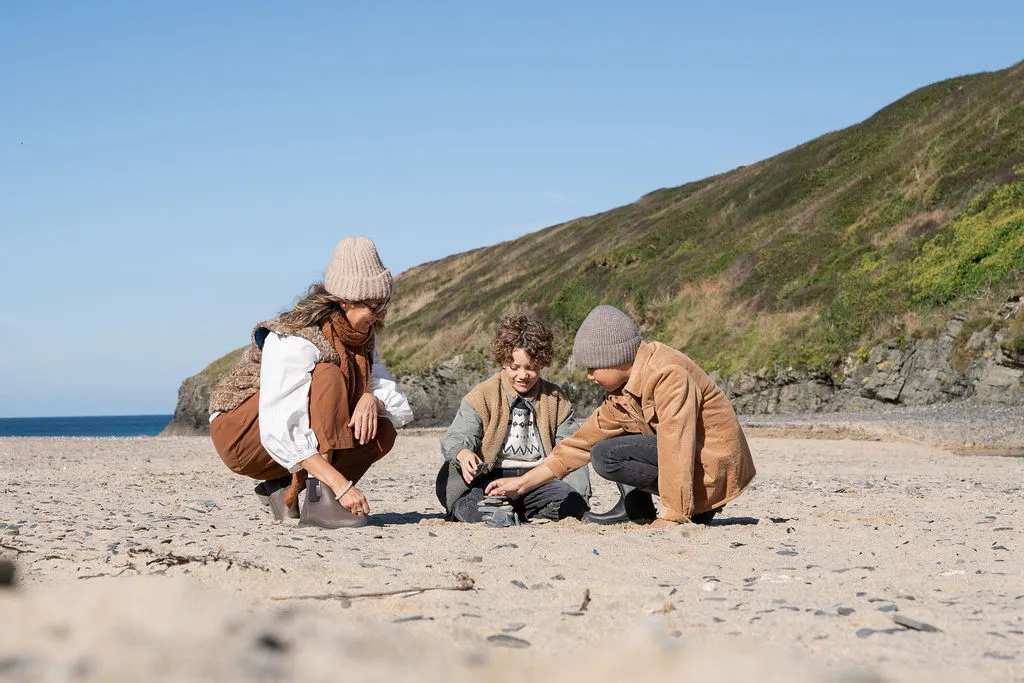
At the shoreline, nori or laver seaweed thrives in the winter, a real forager’s treat for those getting out and about. This glossy, marine alga has been a Cornish staple for centuries, bringing nutrition and umami flavours to a festive feast.
“Nori or laver can be harvested and dried at home, ready to be incorporated into a range of seasonal dishes,” says Rachel Lambert, forager, guide and author of Seaweed Foraging in Cornwall and the Isles of Scilly (where she guides you through 16 seaweeds with 32 recipes).
“Laverbread, a traditional Welsh delicacy, can be made by slowly simmering the nori until it forms a rich, savoury paste that pairs beautifully with bacon or toasted bread at breakfast.”
Here’s Rachel’s tips for how to harvest in the wild: “Only take what you need – no more than a third of the plant – and avoid pulling the seaweed from its root to allow it to regenerate,” says Rachel. “Always respect the power of the sea and check the tides, water quality and local guidelines, as some beaches may have specific foraging restrictions.”
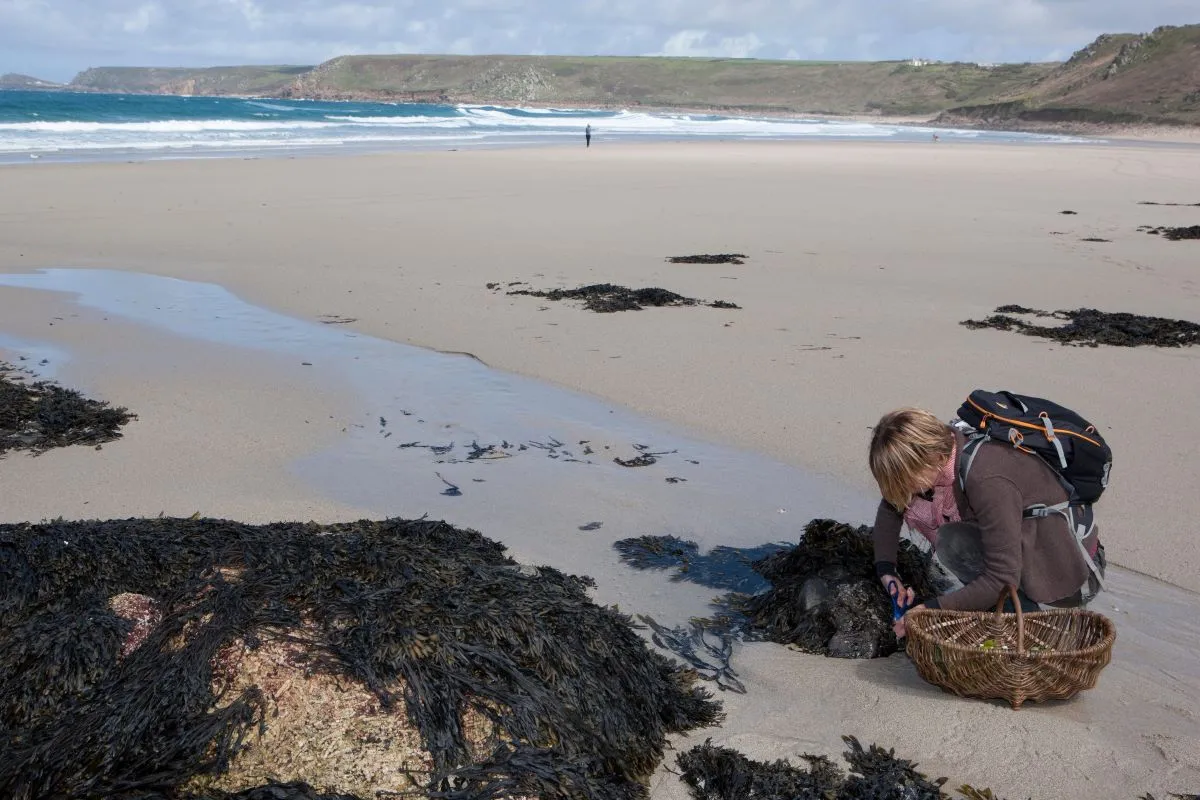
“You can crispen dried nori in the oven to create your own seaweed crisps or use it as a garnish for seafood dishes. Laverbread, a traditional Welsh delicacy, can be made by slowly simmering the nori until it forms a rich, savoury paste that pairs beautifully with bacon or toasted bread at breakfast,” she adds.
“Alternatively, mix it into soups, or serve it as part of a Christmas Eve seafood platter. With its rich vitamin content, nori adds flavour and a healthy twist to holiday meals.”
MIX IT UP
While warming mulled wine and sparkling Champagne will always have their place at festive gatherings, 2024 is undoubtedly the year of tequila. Premium tequilas have seen a surge in popularity in the UK, moving away from their image as a student bar staple.
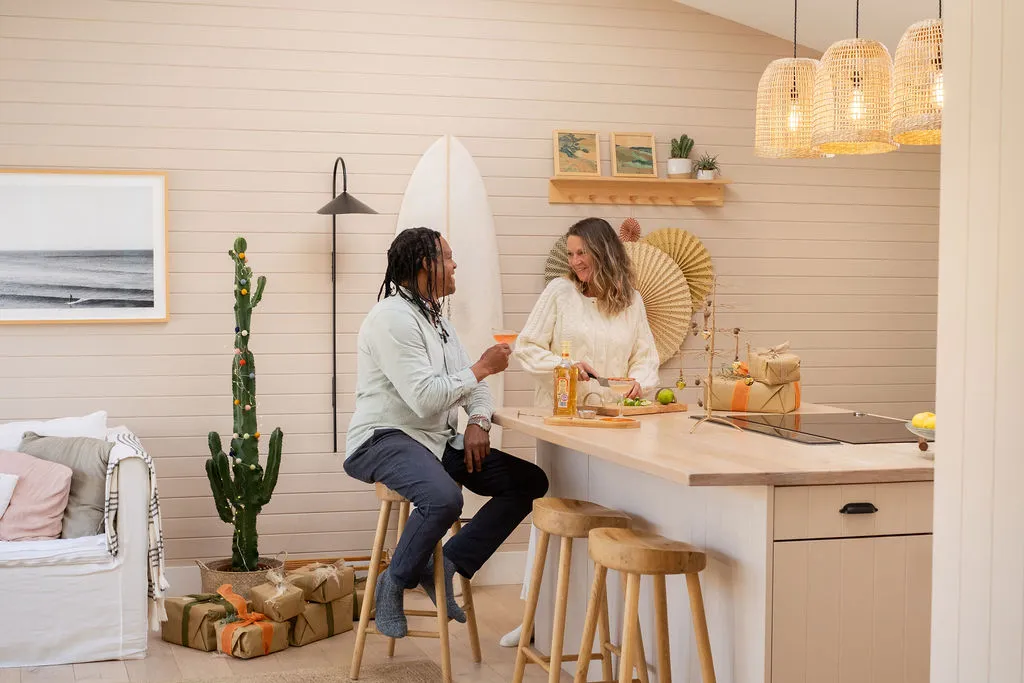
Now crafted for sipping and savouring, the high-quality varieties made from 100% agave, are increasingly favoured by discerning drinkers for their smooth flavours and artisanal production methods.
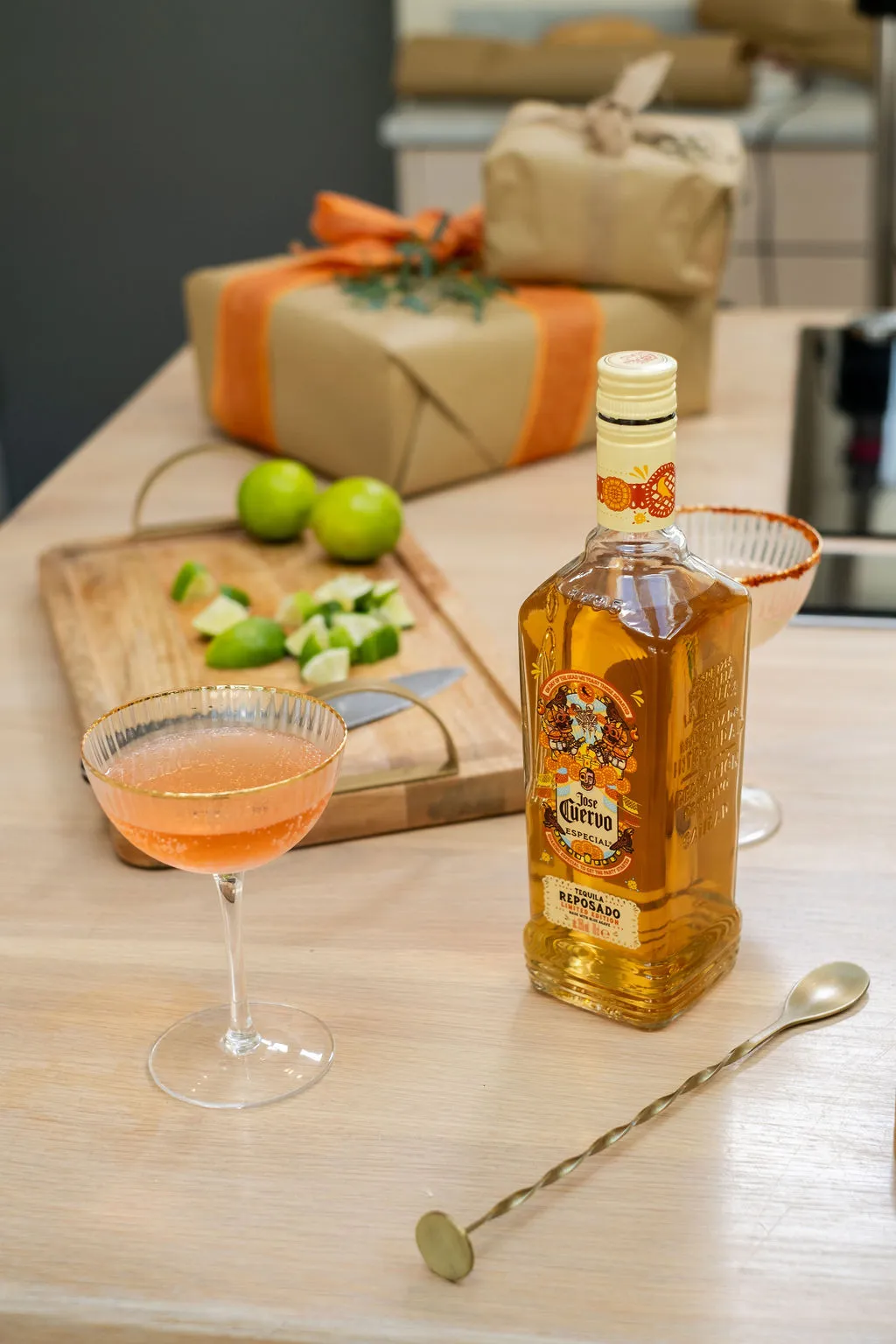
“At Sauce, we believe the perfect way to kick off any celebration is with a margarita, and right now, spicy margaritas are the star of the show,” explains Will Bickham, owner of Sauce, a Cornish-based pop-up bar and catering company.
Will’s – pre-batched margarita recipe
Make in advance; takes seconds to serve – perfect for entertaining over the festive season.
Pre-batch your ingredients by mixing the following in a jug or bottle (measurements per cocktail): 50ml Blanco tequila, 20ml golden agave syrup, 25ml freshly squeezed lime juice, pinch of sea salt, 50ml water.
Keep it chilled in the fridge until ready to serve.
When it’s party time, add chamoy (a fruity Mexican sauce) to the rim of each glass and dip into Tajin (a chilli and lime seasoning) – for the right kick of spice, a hint of saltiness and touch of citrus.
Then, pour your tequila mixture over ice into your prepared glass and enjoy!
For an alcohol-free shoreside-inspired alternative, try Pentire’s wintery aperitif of Coastal Spritz (blended with blood orange, sea rosemary and oakwood) and tonic.
DRESSING UP
Fancy changing the palette of the festive decorations, taking inspiration from the world of festivals and celebrations?
String vibrant papel picado garlands along your mantelpiece, doorways and windows. Opt for designs featuring Christmas themes like stars, angels or Christmas trees, in bright pinks, oranges, blues and greens to add a hint of tradition.
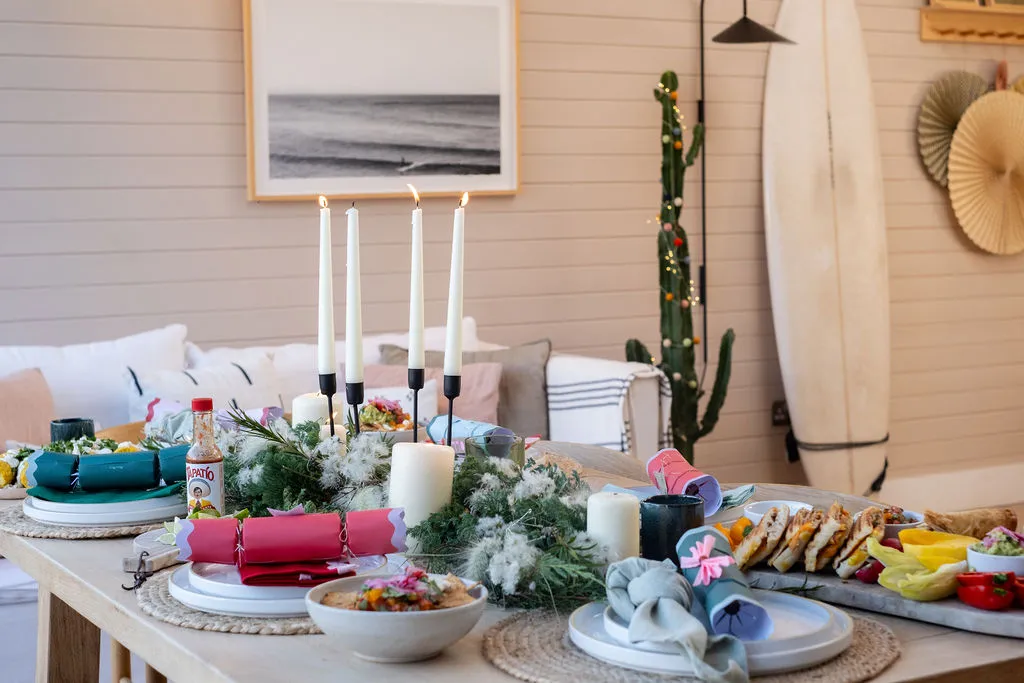
For Christmas dinner, bring along table runners and placemats with a pop of colour, like these from Cornish homeware designer Jenny Aves. Bring the outside in, with natural coastal elements as table-settings: driftwood candle holders, seashells, or turquoise-coloured glassware to merge Mexican vibrancy with seaside charm.

“String a set of fairy lights from a Swiss cheese plant or hang some bright baubles from a cactus, for a touch of festive flair minus the pine needle stress.”
A Mexican piñata marks a special occasion, so incorporate them into your tree decor. Hang mini piñata stars as ornaments or use one as a Christmas tree topper.
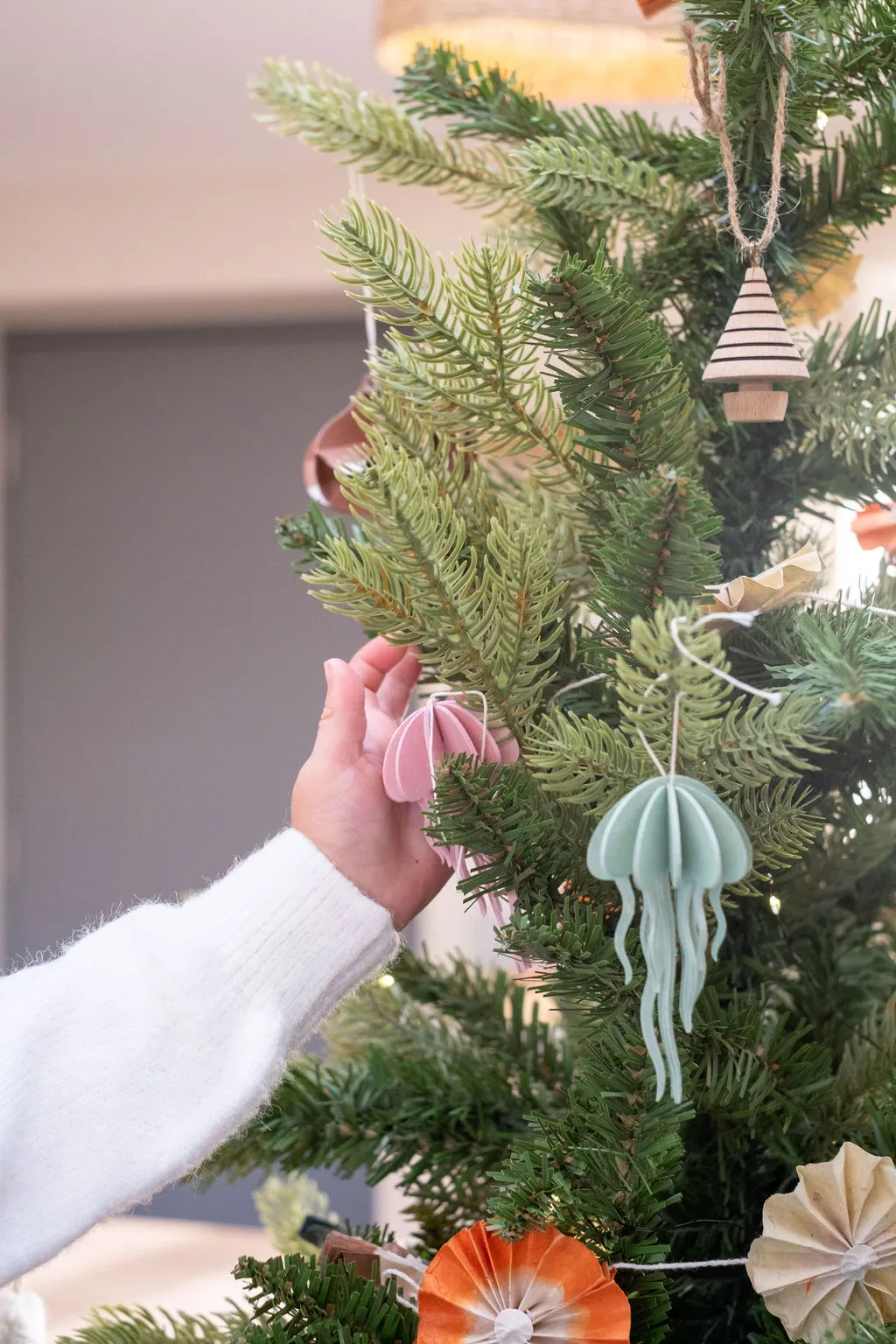
And rather than sourcing and setting up a Christmas tree, why not decorate the houseplants instead? String a set of fairy lights from a Swiss cheese plant or hang some bright baubles from a cactus, for a touch of festive flair minus the pine needle stress.
CORNISH CUSTOMS
While overwintering along the Cornish coast, you could also take the time to enjoy some locally-sourced customs. Cornwall is rich in unique festive traditions, especially around the winter solstice on 21st December – a time for reflection, gathering around fires, and watching the sun set over the rugged moorland.
“A forerunner to mistletoe, this globe-shaped decoration is made from hoops of wire decorated with evergreen foliage like holly, ivy and mistletoe. A large red apple is hung in the centre to symbolise fertility and abundance.”
The Montol Festival in Penzance is reviving ancient Cornish traditions, culminating in a masked procession with flaming torches and the burning of the ‘Sun Resplendent’ effigy that marks the gradual return of the light. Quieter, mystical winter solstice celebrations take place on Bodmin Moor at Trethevy Quoit or The Hurlers, ancient stone circles that align with the solstice sunset.
Welcome a long-held Cornish custom into your retreat by making a kissing bush, also believed to hark back to pagan solstice celebrations. A forerunner to mistletoe, this globe-shaped decoration is made from hoops of wire decorated with evergreen foliage like holly, ivy and mistletoe. A large red apple is hung in the centre to symbolise fertility and abundance. Add even more decoration, from colourful ribbons to dried fruit.
Letters from the North Pole
“I remember my mum saying to me, there’s been a lot of stories written about Santa Claus, and there’s been a lot of songs written about Santa Claus. But truth is, nobody knows what Santa really looks like because nobody has even seen Santa Claus in real life. And that was that. That was the answer that I needed to keep the magic alive, you know, because it’s the not knowing – that’s magic.”
Graphic designer for film and author Annie Atkins told us why she jumped at the chance to write her new book Letters from the North Pole.
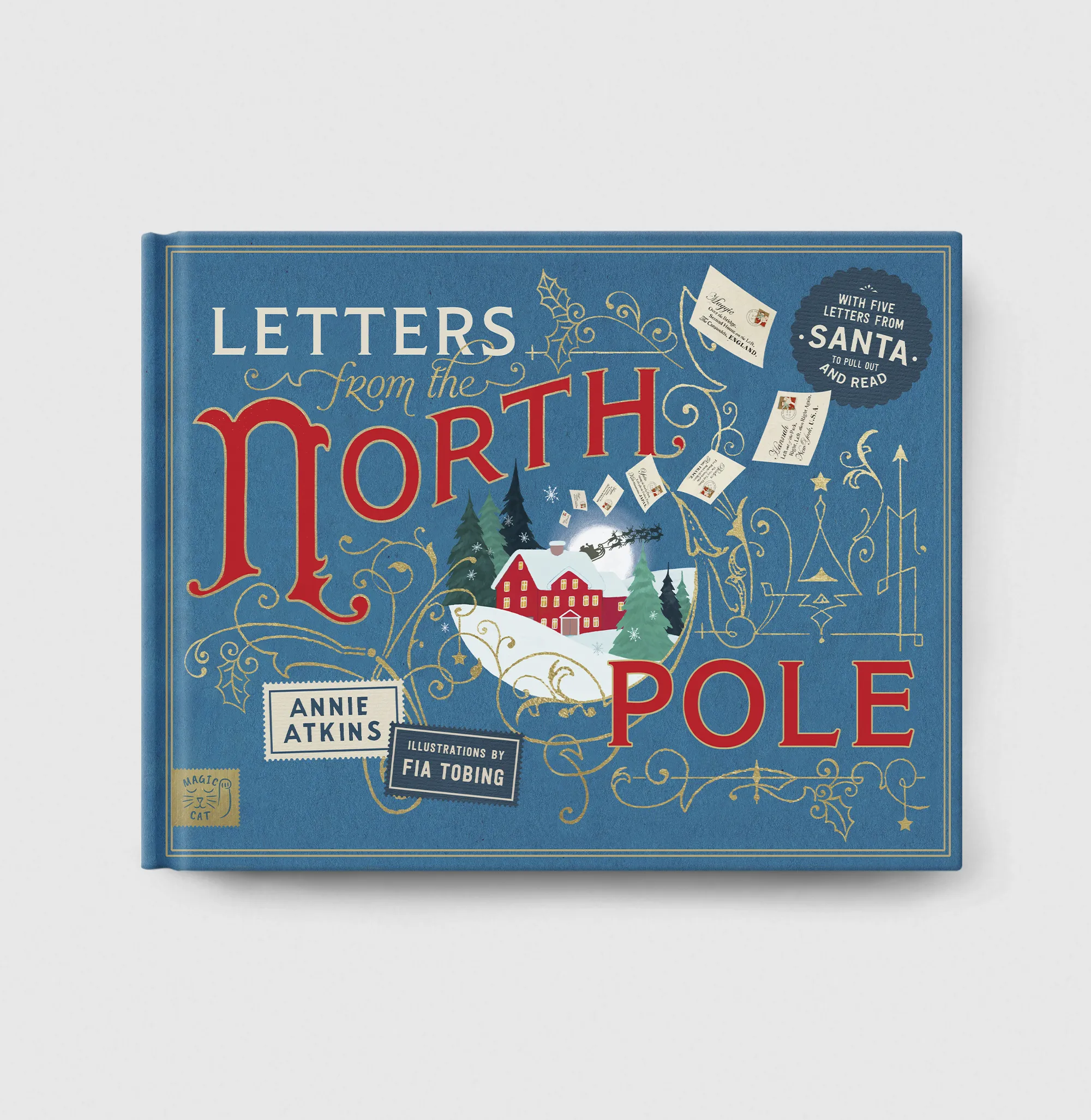 Credit: Letters from the North Pole by Annie Atkins and Fia Tobing
Credit: Letters from the North Pole by Annie Atkins and Fia Tobing
After spending the last 15 years making fake letters for characters in film, Annie has turned her passion for letter writing to imaginary correspondence between children and Father Christmas – and his workshop.
In the book – hoping to spark imaginations during the Christmas countdown – children write to Santa with ideas for new inventions and new toys that the North Pole-based elves could create. The letters from the North Pole feature intriguing technical drawings – direct from the workshop.
If the children are away for Christmas, they might need to give Santa directions to their coastal holiday home to avoid being missed on Christmas Eve.
 Credit: Letters from the North Pole by Annie Atkins and Fia Tobing
Credit: Letters from the North Pole by Annie Atkins and Fia Tobing
And the creativity doesn’t stop there, Annie’s making time between Christmas card correspondence and decoration-making to run festive letter writing workshops, featuring stamps creation and fictional franking marks. Find @annieatkins on Instagram to find out when and where.
Light-up your Christmas countdown imagination, bring a twist of Cornish and coastal inspiration to Christmas this year.
Get creative, get coastal, choose where you’ll be to celebrate Christmas differently by the sea…

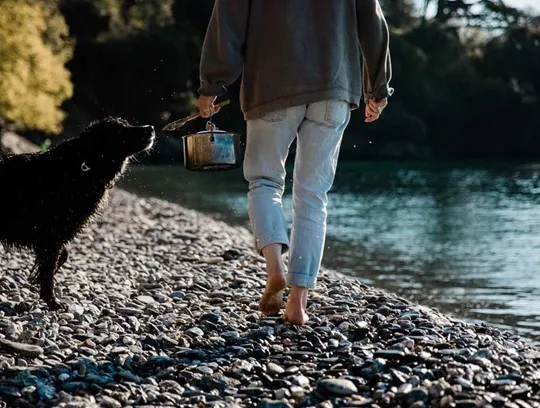
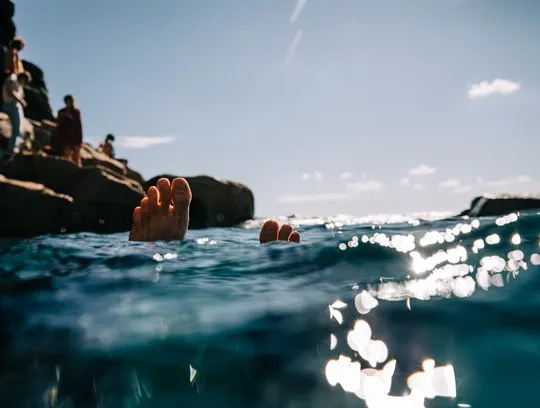
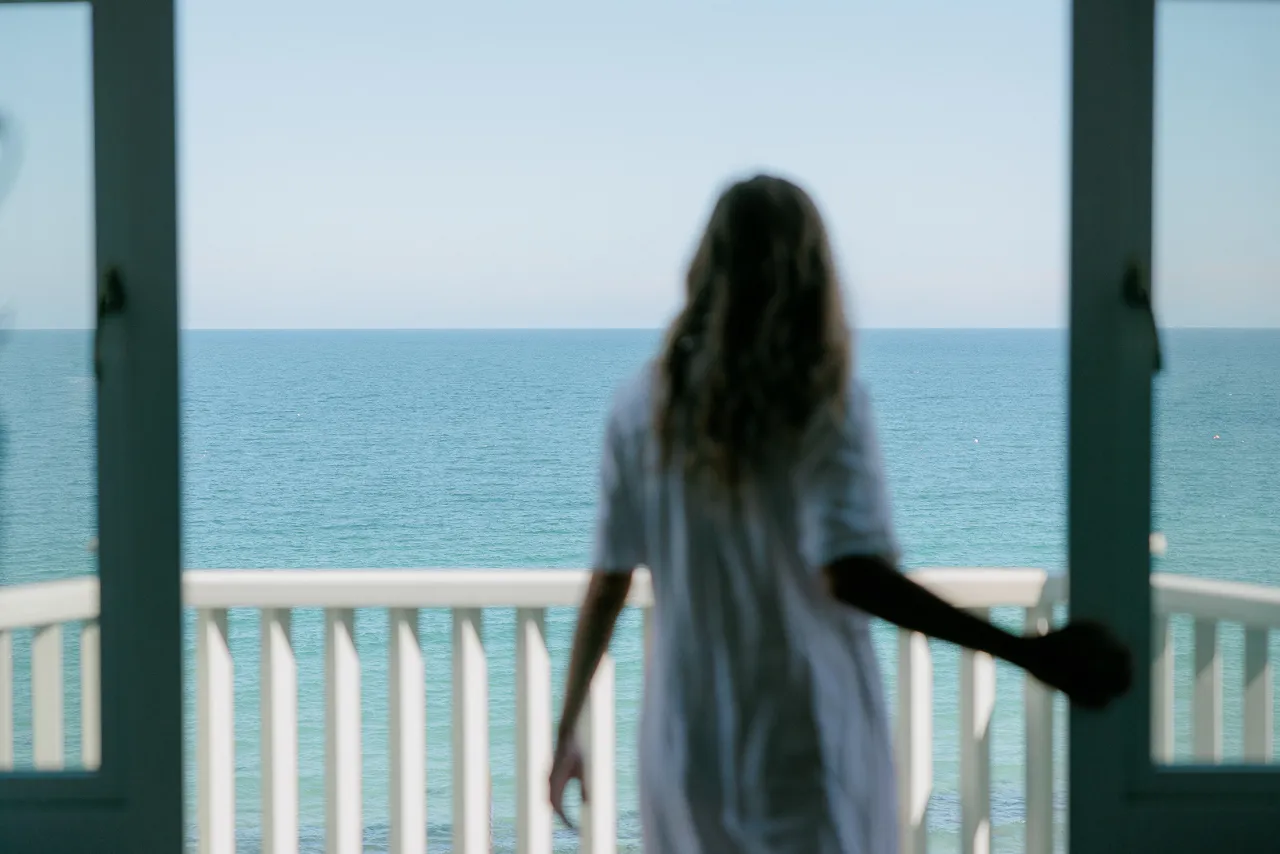
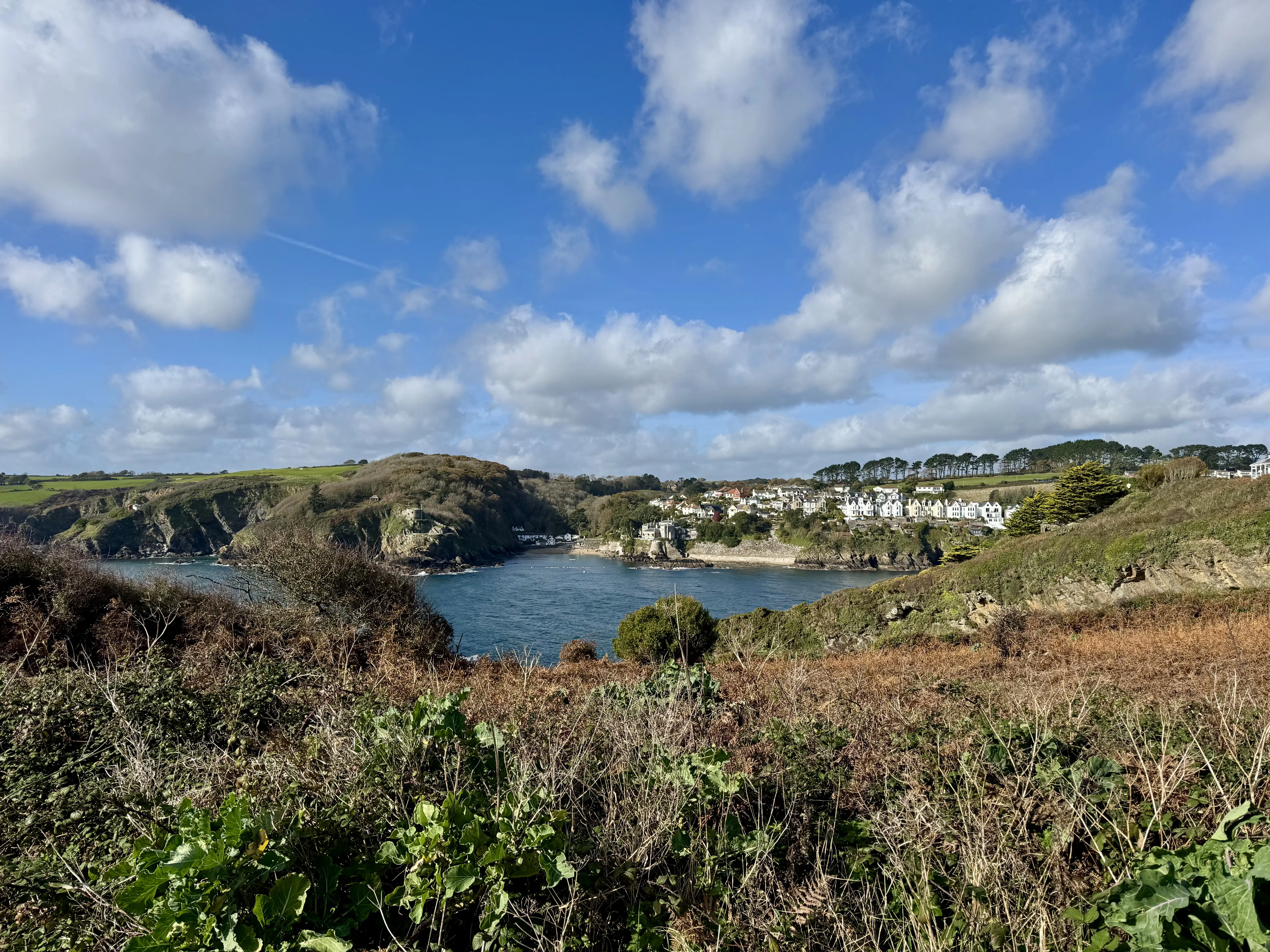
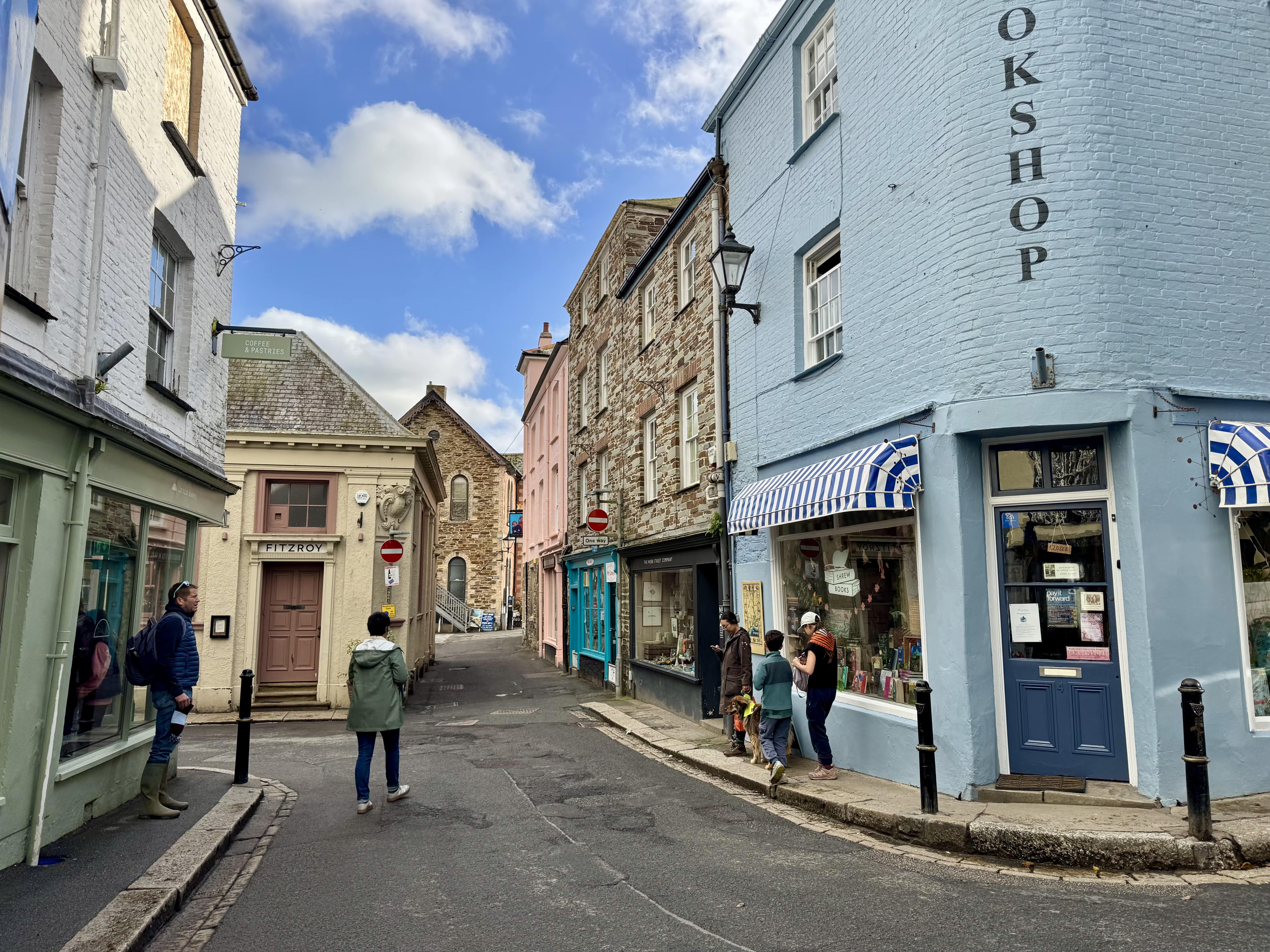
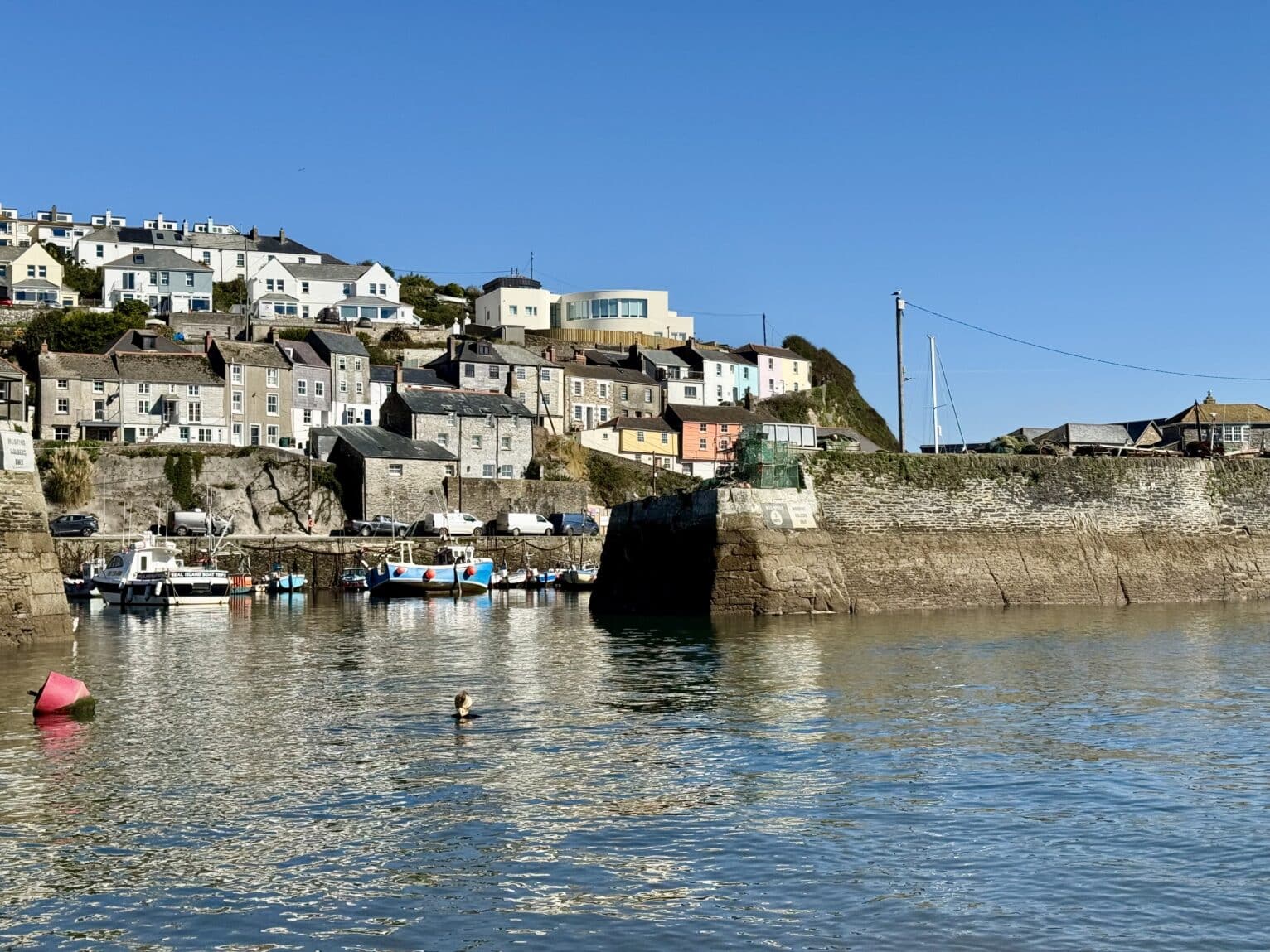
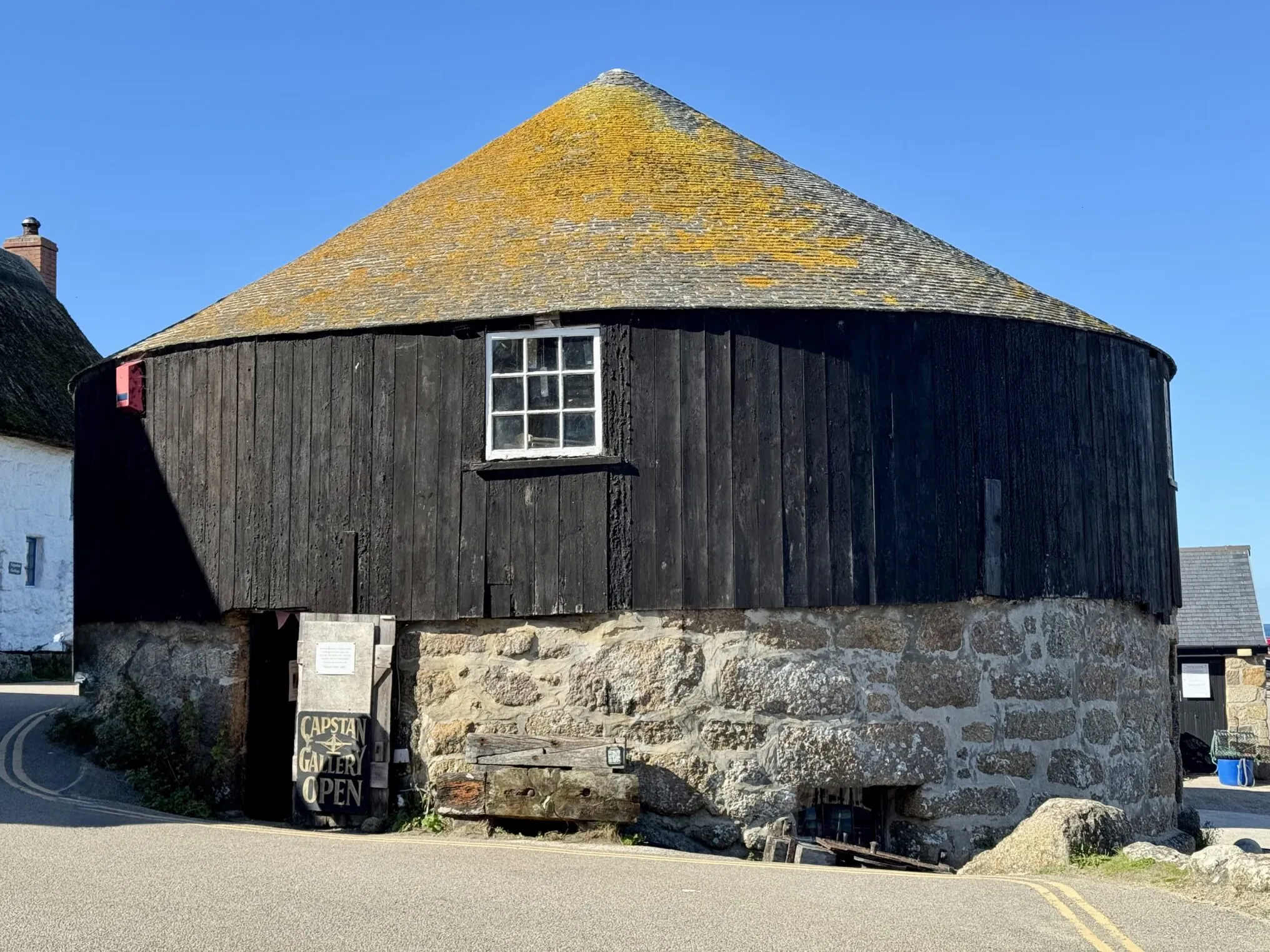
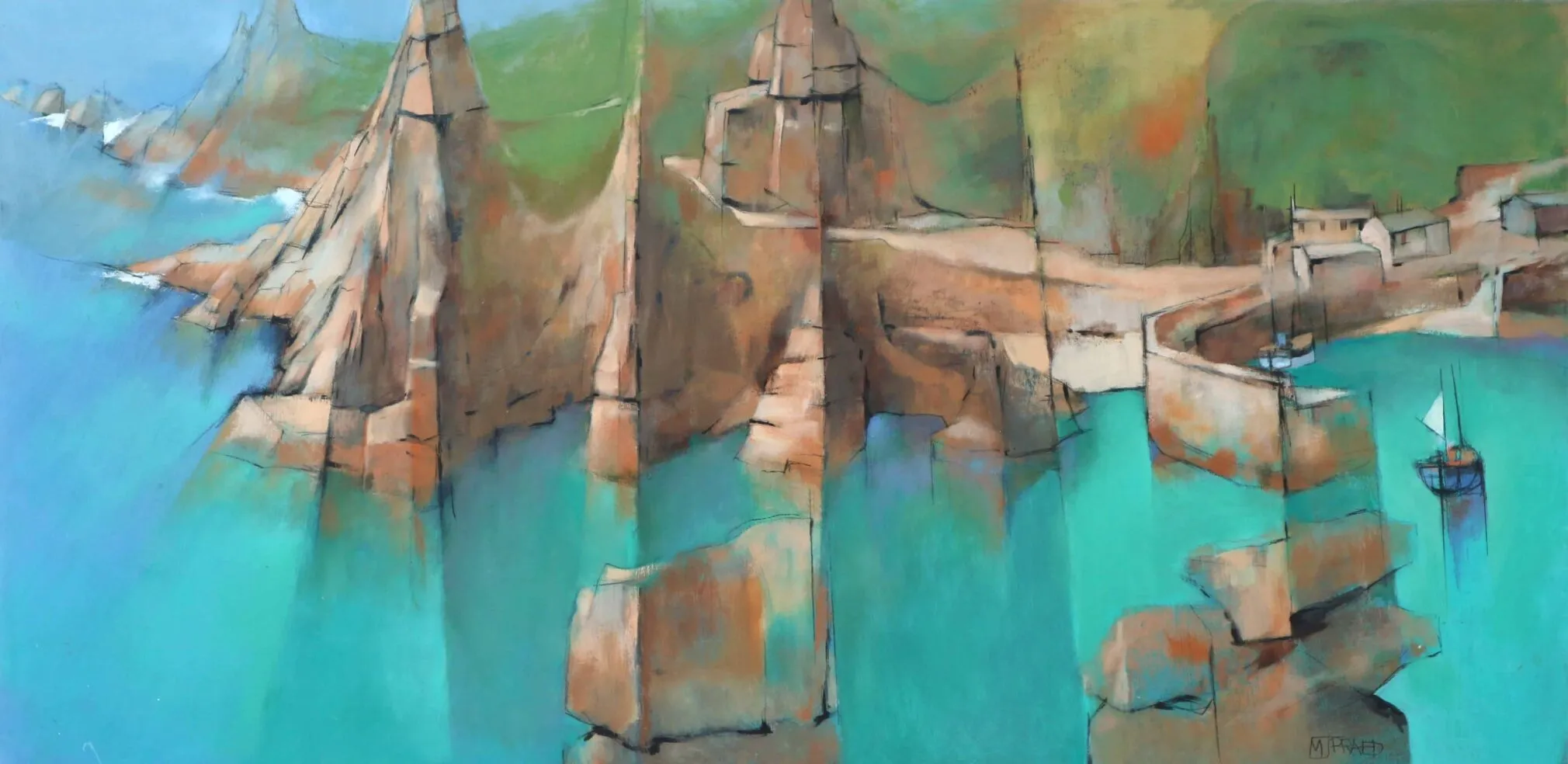
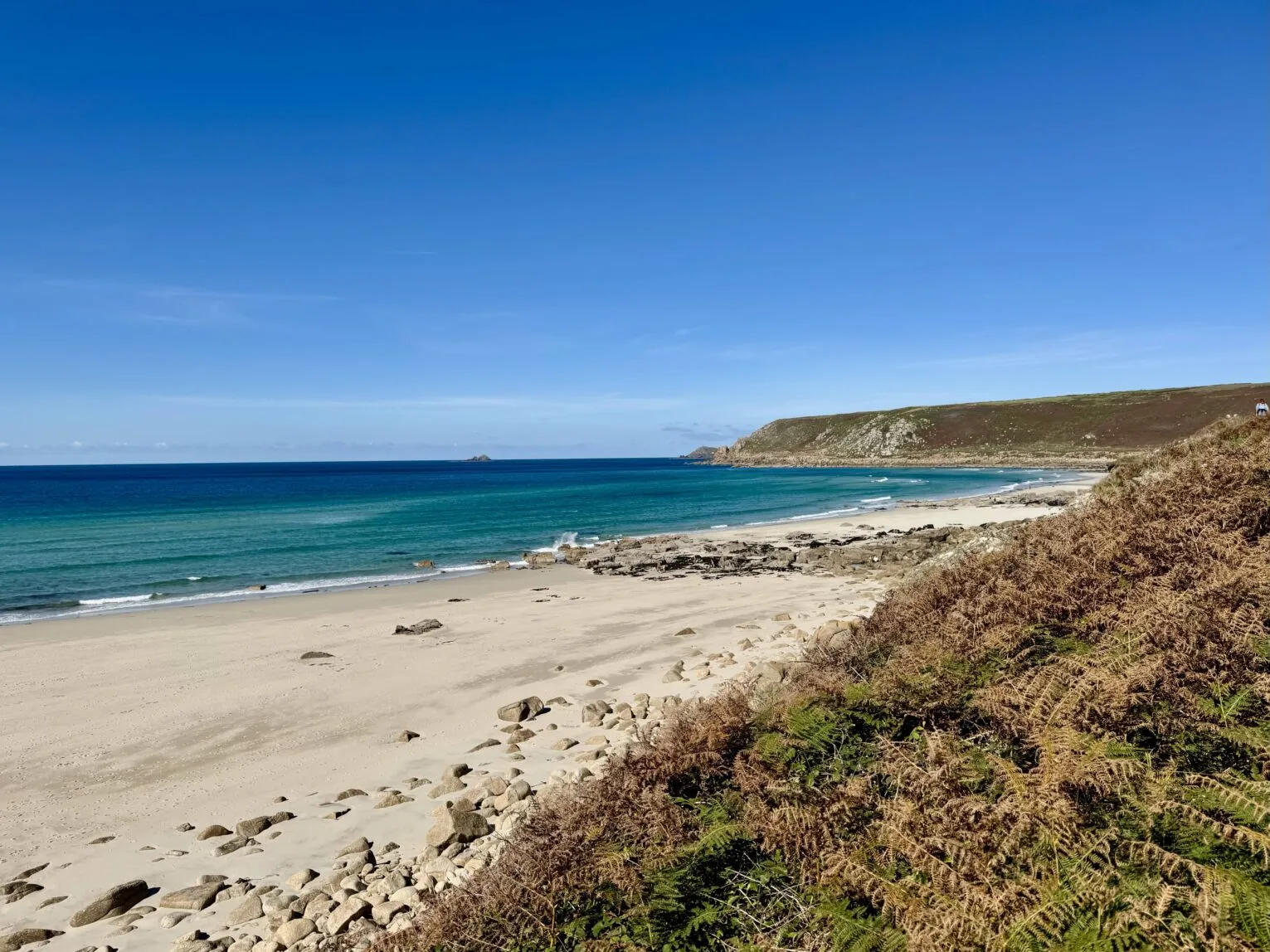
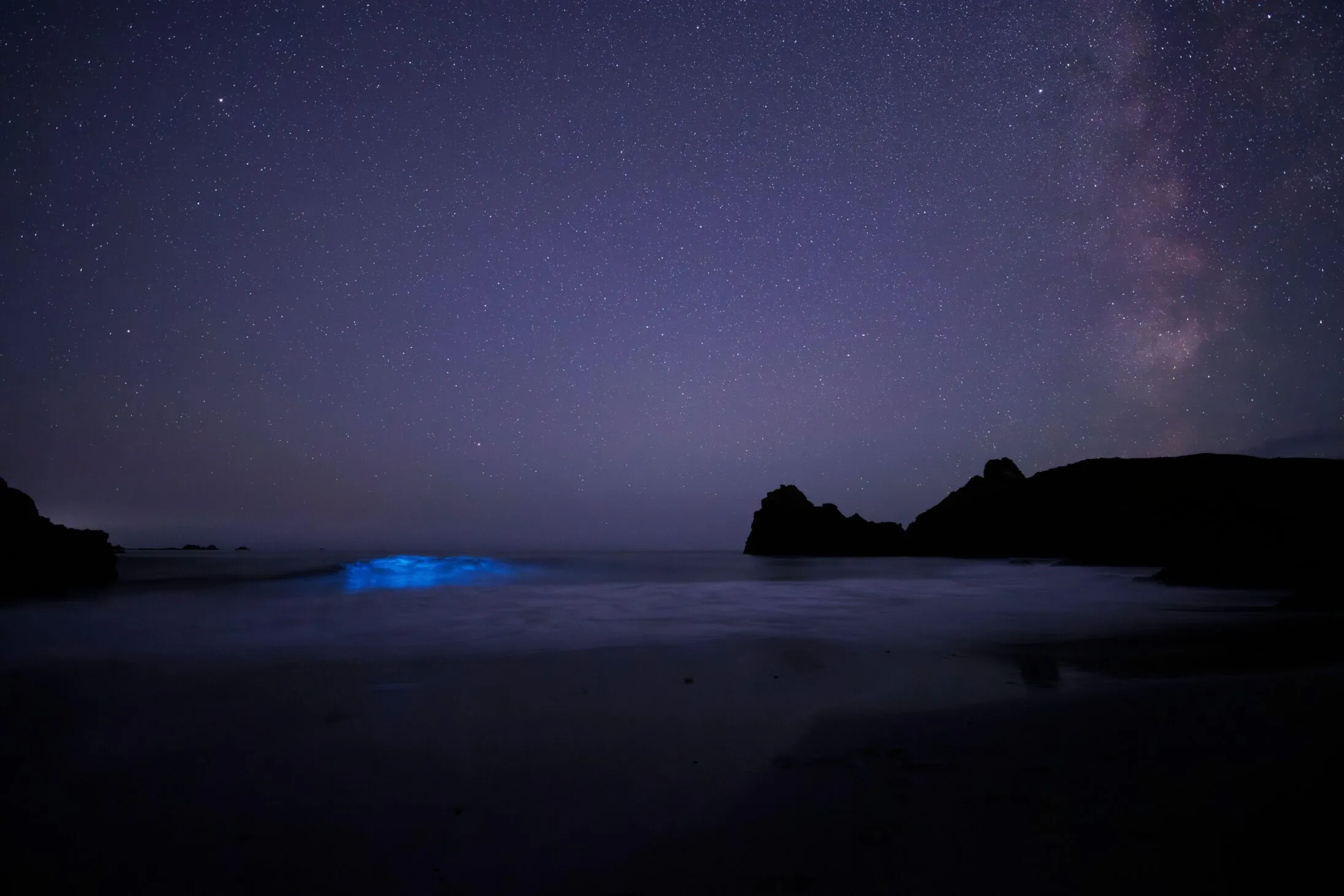
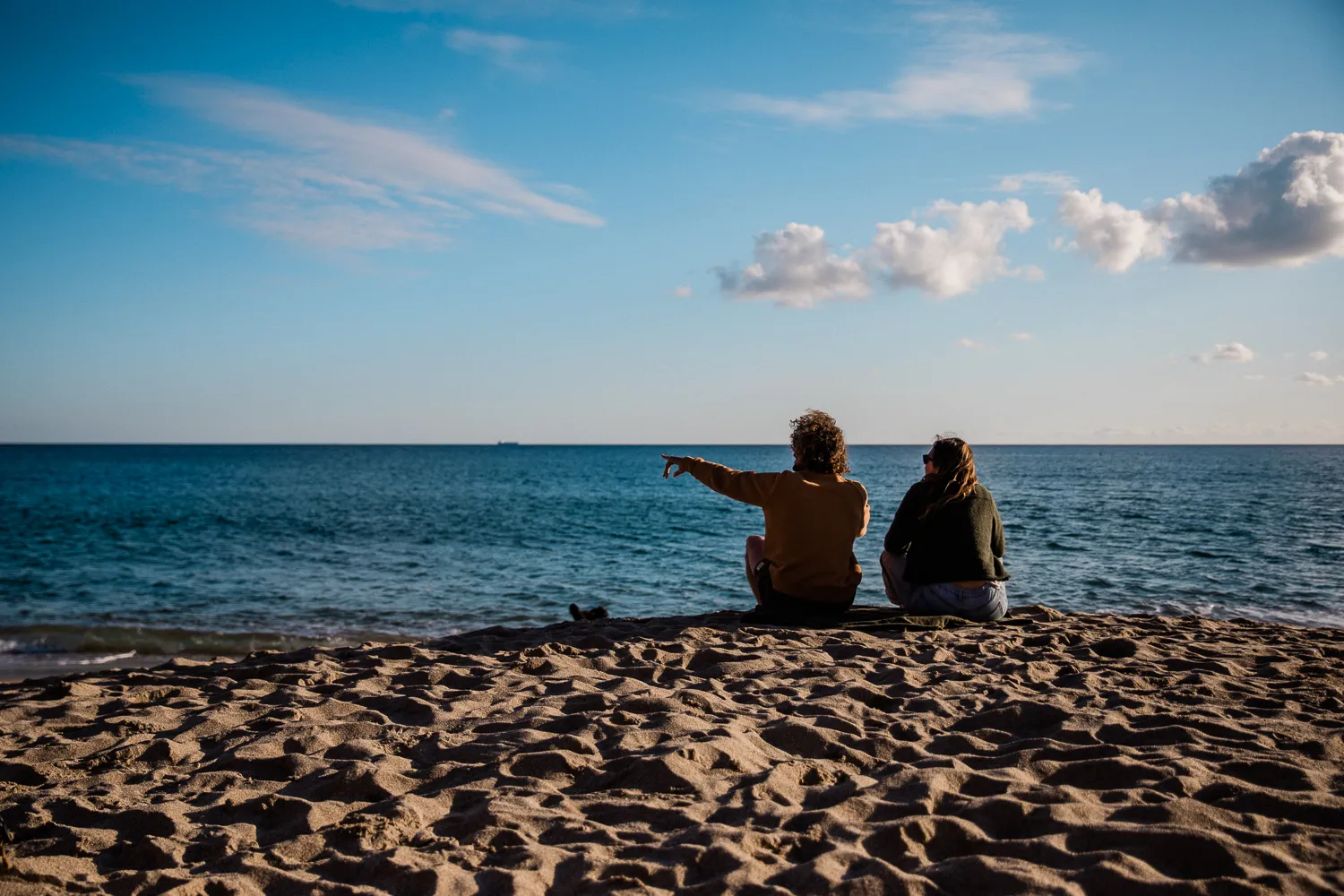
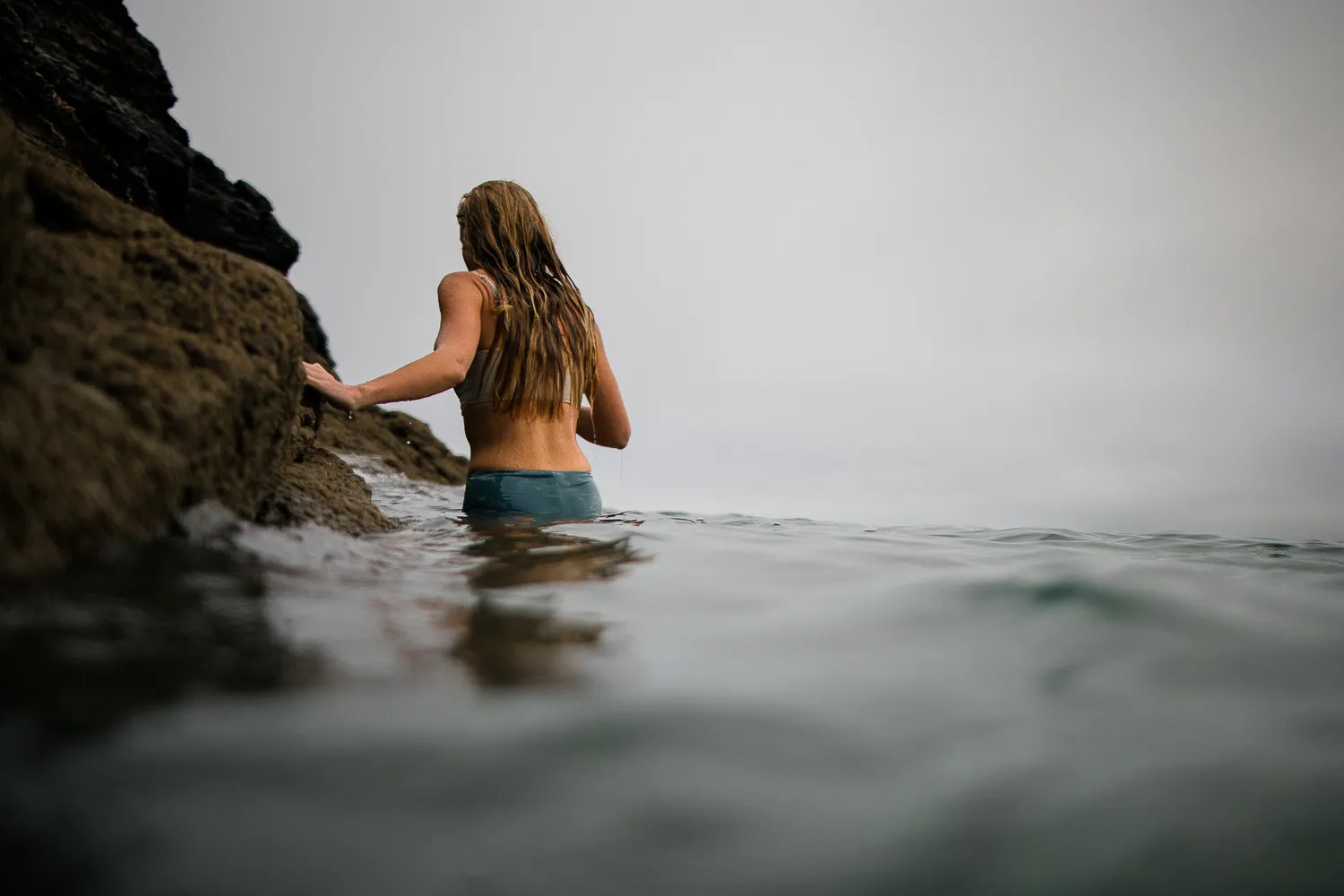
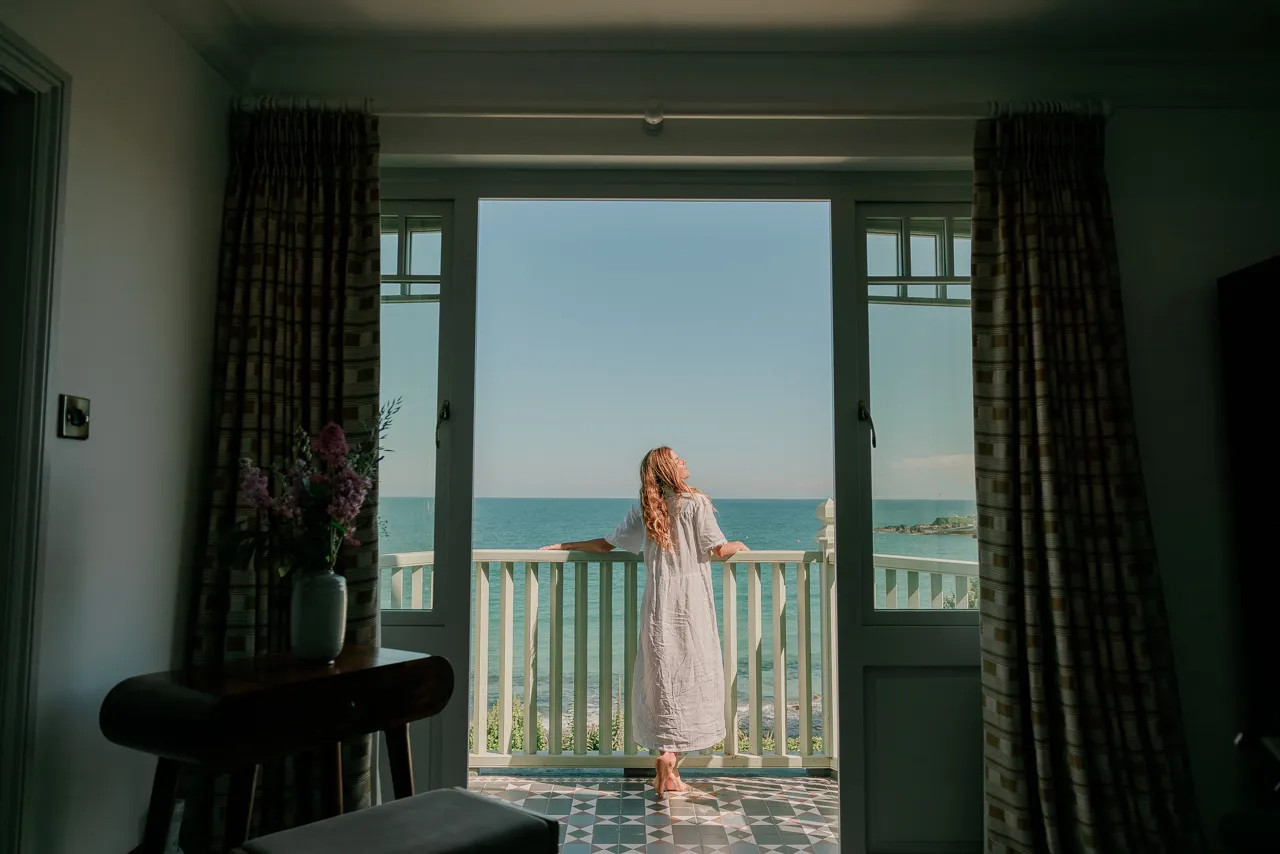
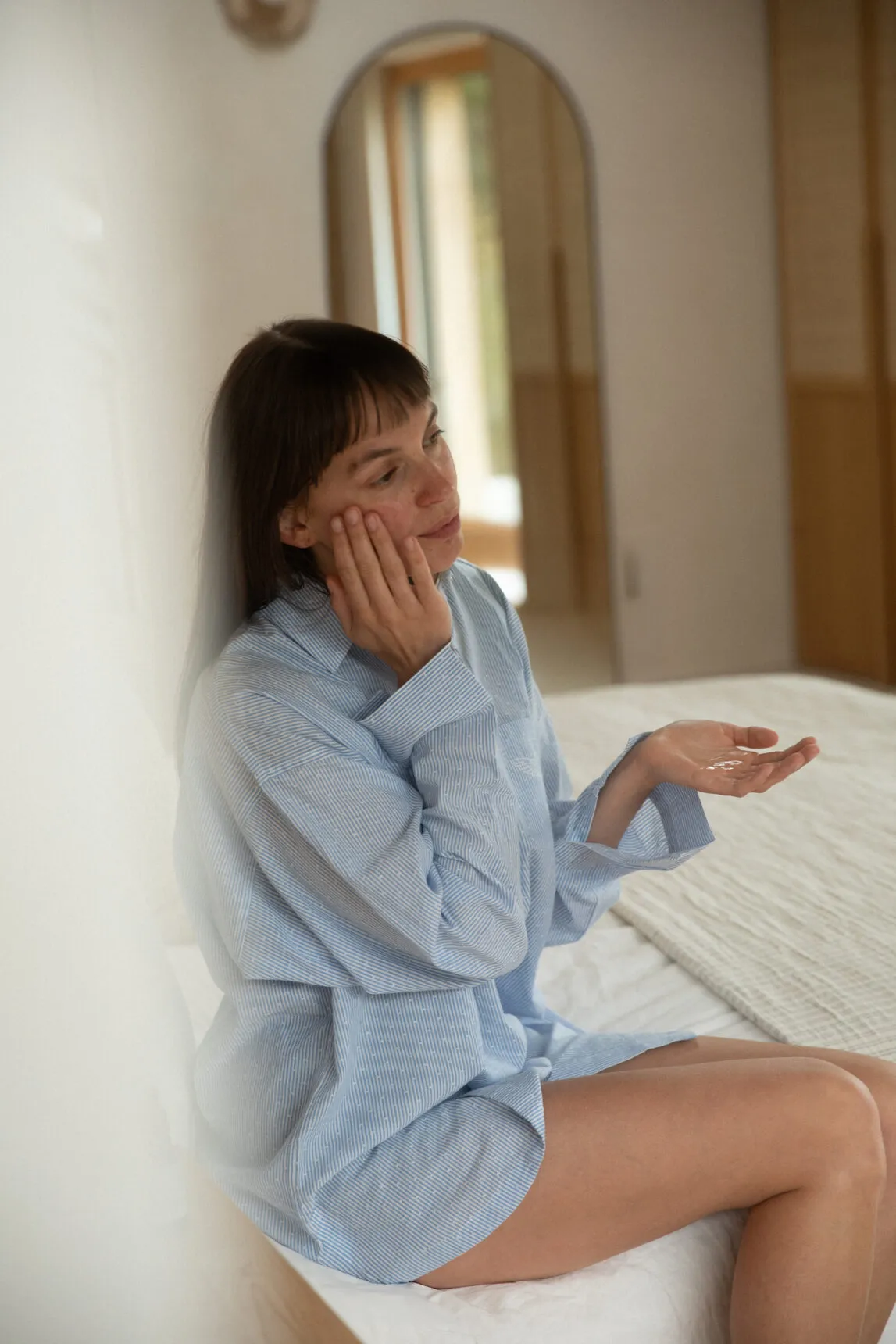
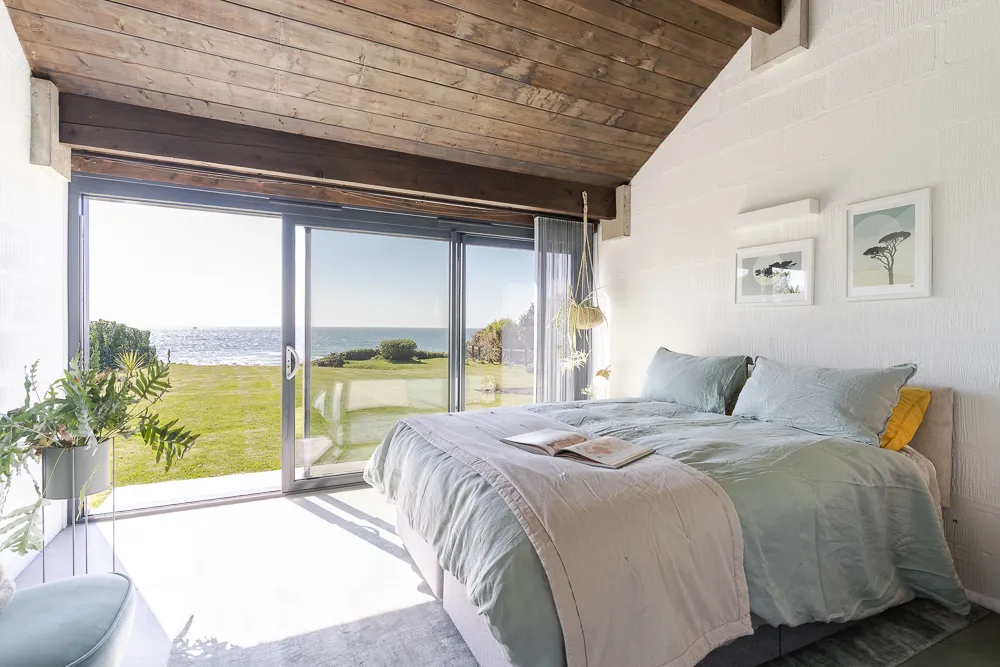 Every one of our properties is within walking distance to the sea, meaning you can doze off to the sound of the waves and wake to morning light reflecting off the sea’s surface. Find your
Every one of our properties is within walking distance to the sea, meaning you can doze off to the sound of the waves and wake to morning light reflecting off the sea’s surface. Find your 